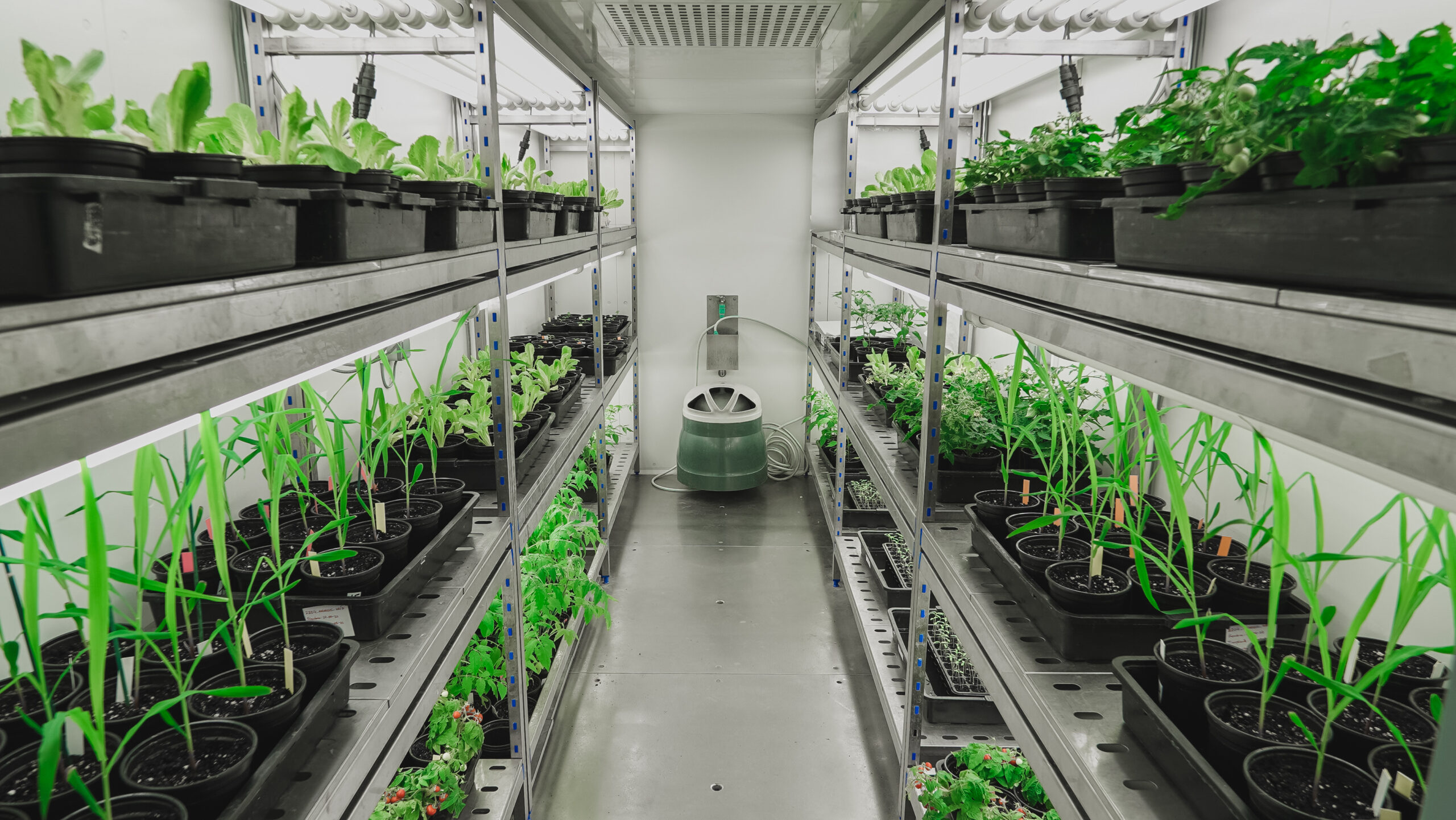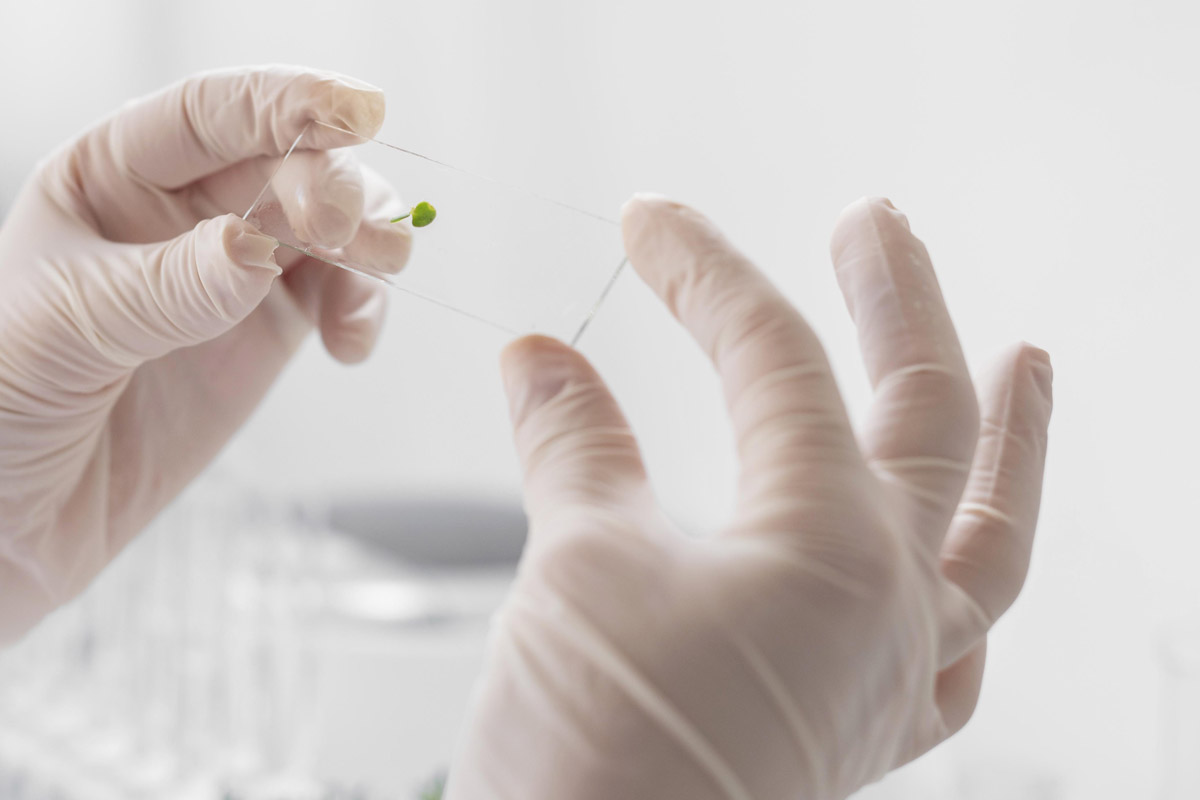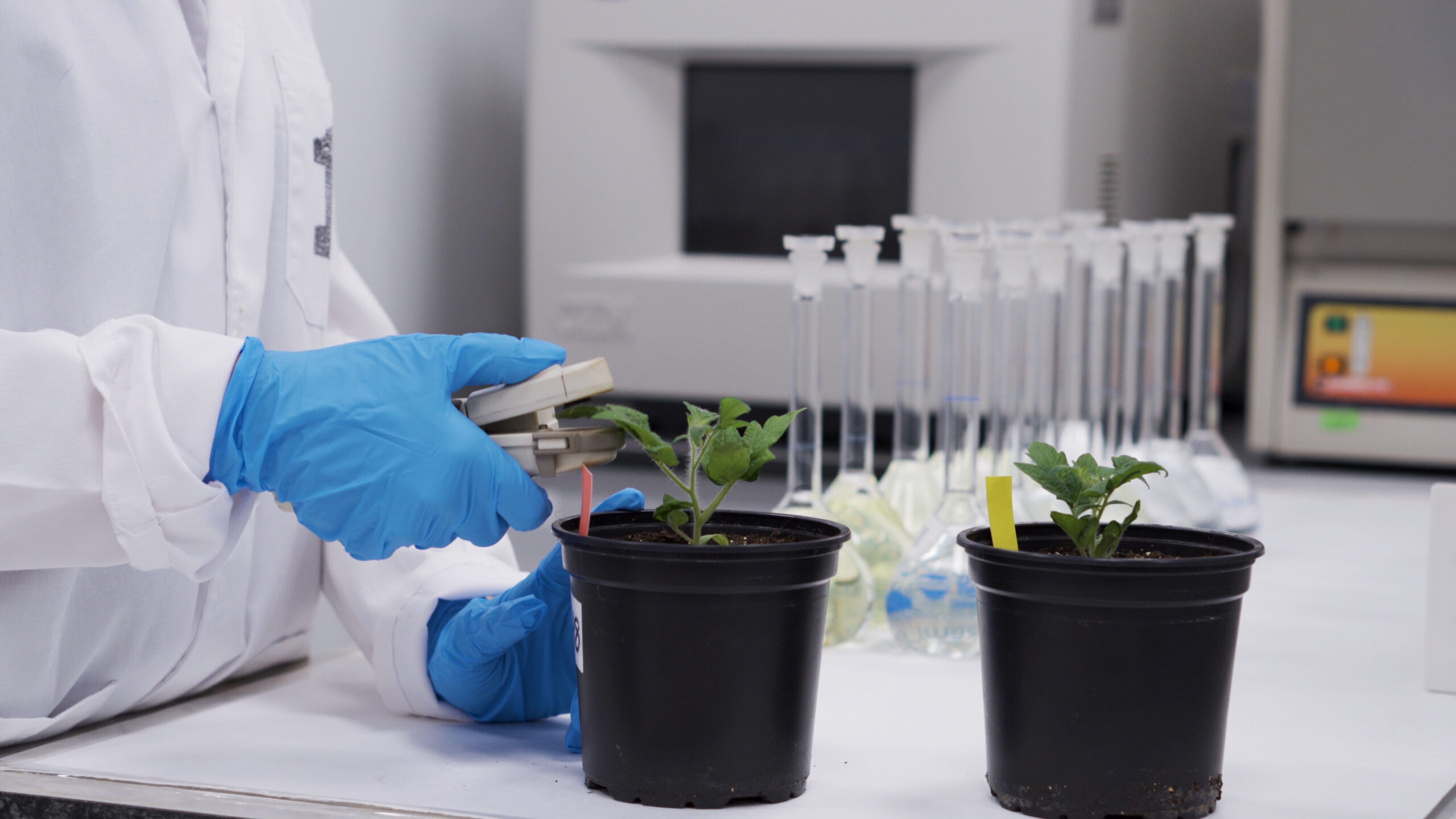The debate on climate change is becoming more and more recurrent, a concern that has become evident with the temperature increases that have occurred over the last few years. On a global scale, we can observe temperatures reaching some of the highest values ever recorded in history. Global warming is the progressive increase in global temperature over time, caused by rising concentrations of greenhouse gases (Jarma et al., 2012). This is a global phenomenon with significant consequences and large-scale impacts that are difficult to predict with certainty. Of concern are the periods of high temperatures that have been occurring in different regions of the world, which have a clear impact on food production and the rising role of plant biostimulants (Jarma et al., 2012).
Effects of High Temperature on Plants
There is scientific evidence on the impact of climate change on agriculture (IPCC, 2007). Temperature is a key factor influencing crop growth. Each crop has an optimum temperature range within which crops will grow well and a maximum temperature range beyond which irreversible crop damage occurs (Figure 2).
Heat stress is the increase in temperature beyond a threshold for a period of time sufficient to cause damage that hinders plant growth and development. Heat stress has serious consequences on crop yields and is attributed to large agricultural losses (Jha et al., 2014).

Heat tolerance in plants: An overview
Impacts of Heat Stress on Plant Growth and Development – can Plant Biostimulants be the solution?
If temperatures rise above the maximum limit for a certain period of time, irreversible damage occurs at the cellular level, affecting crop growth, development and yield. As an example, figure 1 shows some of the morphological changes that occur in wheat plants under heat stress (Lal et al., 2021).
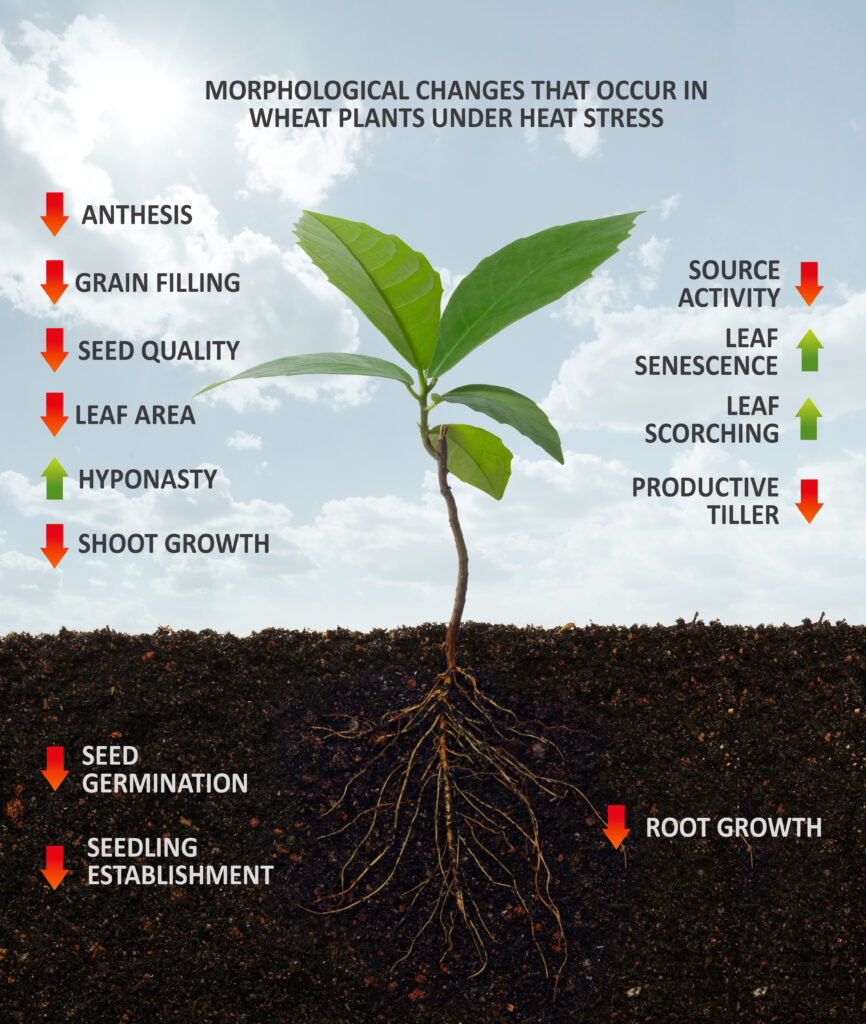
Some of the adaptive changes that occur in the plant under heat stress:
- Electrolyte leakage
The cell membrane is the first to be affected by heat stress (Whang et al., 2011); high temperatures increase its fluidity and permeability, causing membrane lipids to become more fluid and permeable (Savchenko et al., 2022), and allowing electrolyte leakage (Los & Murata, 2004 ; Porch and Hall, 2013Gisbert-Mullor et al., 2021;). Electrolyte leakage can be used as a marker of heat tolerance such that heat stress-tolerant plants show lower membrane permeability than non-tolerant plants (Chaves-Barrantes & Gutiérrez-Soto, 2017 ; Wang et al., 2011; Gisbert-Mullor et al., 2021).
- HSPs
The plant responds to heat stress by synthesizing and accumulating heat shock proteins (HSPs) (Iba, 2002; Zinn et al., 2010). HSPs protect and repair proteins against heat damage (Barua et al., 2003; Wang et al., 2004; Hu et al., 2020), allowing cells to function during episodes of high-temperature stress (Wahid et al., 2007; Chaves-Barrantes & Gutiérrez-Soto, 2017).
- Antioxidant production
Heat stress causes oxidative stress by inducing the production of reactive oxygen species (ROS). To attenuate the damage caused by ROS, plants produce a number of antioxidant enzymes. Almeselmani et al., 2006; Wahid et al., 2007)
- Compatible osmolyte accumulation
Under high-temperature stress, plants accumulate compatible osmolytes (Schwacke et al., 1999; Iba, 2002; Nagesh & Devaraj, 2008; Chaves-Barrantes & Gutiérrez-Soto, 2017). The accumulation of these solutes gives the plant increased tolerance to heat stress (Park et al., 2006; Wahid, 2007; Wahid & Close, 2007; Chaves-Barrantes & Gutiérrez-Soto, 2017).
Role of plant biostimulants in mitigating the effects of climate change on crop performance
At Dadelos Agrosolutions we are very aware of the damage that climate change causes and will cause on crops and that is why, from our R&D department, we are researching into obtaining raw materials for plant biostimulants to increase the resistance of plants against heat stress. We have carried out transcriptomic tests that have allowed us to select the best active compounds capable of improving plant tolerance to heat stress.
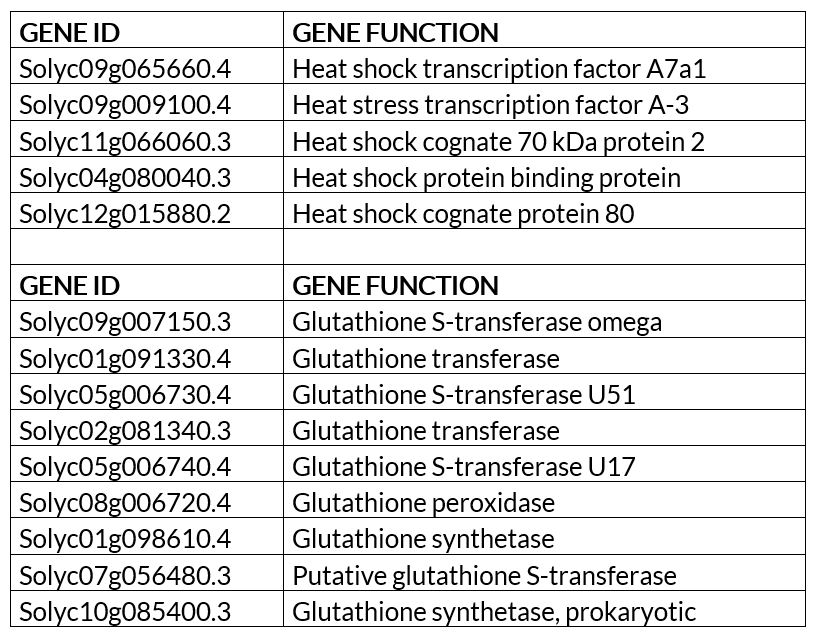
Based on these studies, we have created 12 exclusive formulations for plant biostimulants made up of a unique variety of active compounds that can improve plant resistance to high temperatures. Our capacity for innovation, together with the experience in formulation acquired over the last 15 years, has led us to seek new raw materials capable of increasing the resistance of crops to the problems caused by climate change.
In the R&D department we are testing some new formulas of raw materials for plant biostimulants that have allowed us to obtain preliminary data such as those shown below.
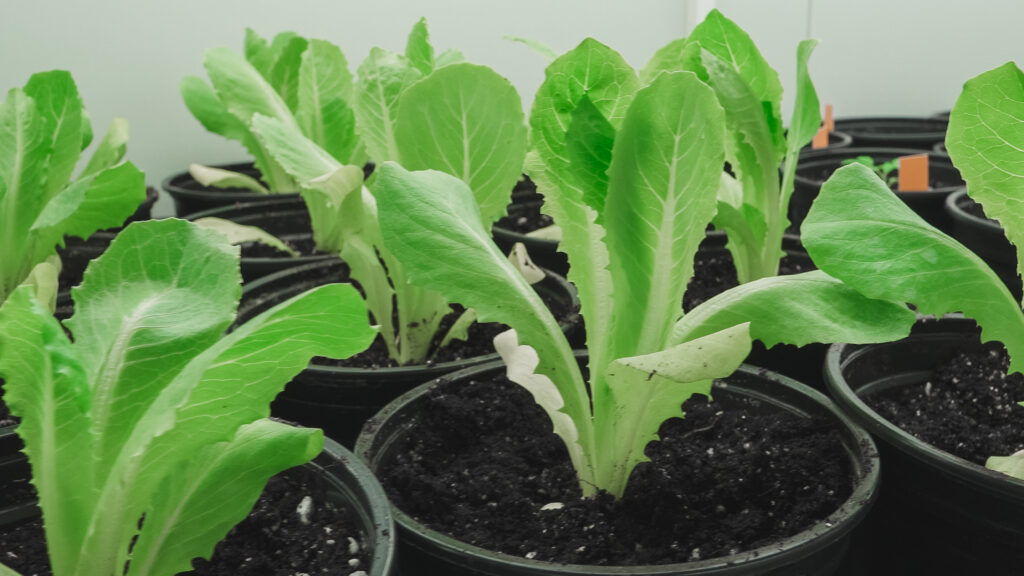
In the growth chamber a new raw material from Dadelos Agrosolutions was tested on lettuce plants under heat stress. After heat stress we observed that with our new raw material we obtained a 65% increase in lettuce leaves, a 6% increase in root dry weight and a 12% increase in leaf dry weight. As previously mentioned, electrolyte leakage is a marker of plant heat stress which in this case shows that the plants with our raw material have less electrolyte leakage, similar to the control plants which were not subjected to heat stress (23 ºC day / 21 ºC night).

These first data are good results that encourage us to continue our research in order to obtain raw materials adapted to the present and future needs of the agri-food sector.
BIBLIOGRAPHY
Ali, M. M., Waleed Shafique, M., Gull, S., Afzal Naveed, W., Javed, T., Yousef, A. F., & Mauro, R. P. (2021). Alleviation of heat stress in tomato by exogenous application of sulfur. Horticulturae, 7(2), 21.
Almeselmani, M., P.S. Deshmukh, R.K. Sairam, S.R. Kushwaha, and T.P. Singh. 2006. Protective role of antioxidant enzymes under high temperature stress. Plant Sci. 171:382-388.
Barua, D., Downs, C. A., & Heckathorn, S. A. (2003). Variation in chloroplast small heat-shock protein function is a major determinant of variation in thermotolerance of photosynthetic electron transport among ecotypes of Chenopodium album. Functional Plant Biology, 30(10), 1071-1079.
Chaves-Barrantes, N. F., & Gutiérrez-Soto, M. V. (2017). Respuestas al estrés por calor en los cultivos. I. Aspectos moleculares, bioquímicos y fisiológicos. Agronomía Mesoamericana, 28(1), 237-253.
Conde, C. I. C. (2014). Cambio climático y agrobiodiversidad. Revista Colombiana de Investigaciones Agroindustriales, 1(1), 72-79.
Feng, B., Liu, P., Li, G., Dong, S. T., Wang, F. H., Kong, L. A., & Zhang, J. W. (2014). Effect of heat stress on the photosynthetic characteristics in flag leaves at the grain‐filling stage of different heat‐resistant winter wheat varieties. Journal of Agronomy and Crop Science, 200(2), 143-155.
Gisbert-Mullor, R., Padilla, Y. G., Martínez-Cuenca, M. R., López-Galarza, S., & Calatayud, Á. (2021). Suitable rootstocks can alleviate the effects of heat stress on pepper plants. Scientia Horticulturae, 290, 110529.
Hu, S., Ding, Y., Zhu, C., 2020. Sensitivity and Responses of Chloroplasts to Heat Stress in Plants. Front. Plant Sci. https://doi.org/10.3389/fpls.2020.00375.
Iba, K. 2002. Acclimative response to temperature stress in higher plants: approaches of gene engineering for temperature tolerance. Annu. Rev. Plant Biol. 53:225-245.
IPCC. Grupo Intergubernamental de Expertos sobre el Cambio Climático. Cambio climático 2007: Informe de síntesis. Ginebra: 2007.
Jarma, A., Cardona, C., & Araméndiz, H. (2012). Effect of climate change on the physiology of crop plants: A review. Revista UDCA Actualidad & Divulgación Científica, 15(1), 63-76.
Jha, U. C., Bohra, A., & Singh, N. P. (2014). Heat stress in crop plants: its nature, impacts and integrated breeding strategies to improve heat tolerance. Plant Breeding, 133(6), 679-701.
Lal, M. K., Tiwari, R. K., Gahlaut, V., Mangal, V., Kumar, A., Singh, M. P., … & Zinta, G. (2021). Physiological and molecular insights on wheat responses to heat stress. Plant Cell Reports, 1-18.
Li, Z., & Howell, S. H. (2021). Heat stress responses and thermotolerance in maize. International Journal of Molecular Sciences, 22(2), 948.
Los, D.A., and N. Murata. 2004. Membrane fluidity and its roles in the perception of environmental signals. BBA-Biomembranes 1666:142-157
Nagesh, R., & V.R. Devaraj. 2008. High temperature and salt stress response in French bean ( Phaseolus vulgaris ). Aust. J. Crop Sci. 2:40-48.
Ocampo, O. (2011). El cambio climático y su impacto en el agro. Revista de Ingeniería, (33), 115-123.
Park, E.J., Z. Jeknić, and T.H. Chen. 2006. Exogenous application of glycinebetaine increases chilling tolerance in tomato plants. Plant Cell Physiol. 47:706-714
Porch, T.G., and A.E. Hall. 2013. Heat tolerance. In: C. Kole, editor, Genomics and breeding for climate-resilient crops. Vol. 2. Springer-Verlag, Berlin, GER. p. 167-202.
Savchenko, GE, EA Klyuchareva, LM Abrabchik y EV Serdyuchenko. 2002. Efecto del choque térmico periódico sobre el sistema de membrana de los etioplastos. Ruso. J. Plant Physiol. 49:349-359.
Schwacke, R., S. Grallath, K.E. Breitkreuz, E. Stransky, H. Stransky, W.B Frommer, and D. Rentscha. 1999. LeProT1, a transporter for proline, glycine betaine, and g-amino butyric acid in tomato pollen. Plant Cell 11:377-391.
Wahid, A., S. Gelani, M. Ahsraf, and M.R. Fooland. 2007. Heat tolerance in plants: an overview. Environ. Exp. Bot. 61:199-223.
Wahid, A., and T.J. Close. 2007. Expression of dehydrins under heat stress and their relationship with water relations of sugarcane leaves. Biol. Plant. 51:104-109.
Wang, LC, MC Tsai, KY Chang, YS Fan, CH Yeh y SJ Wu. 2011. Participación del homólogo de la proteína de anclaje HIT1/AtVPS53 de Arabidopsis en la aclimatación de la membrana plasmática al estrés por calor. Exp. J. Bot. 62:3609-3620.
Zinn, K.E., M. Tunc, and J.F. Harper. 2010. Temperature stress and plant sexual reproduction: uncovering the weakest links. J. Exp. Bot. 61:1959-1968.
